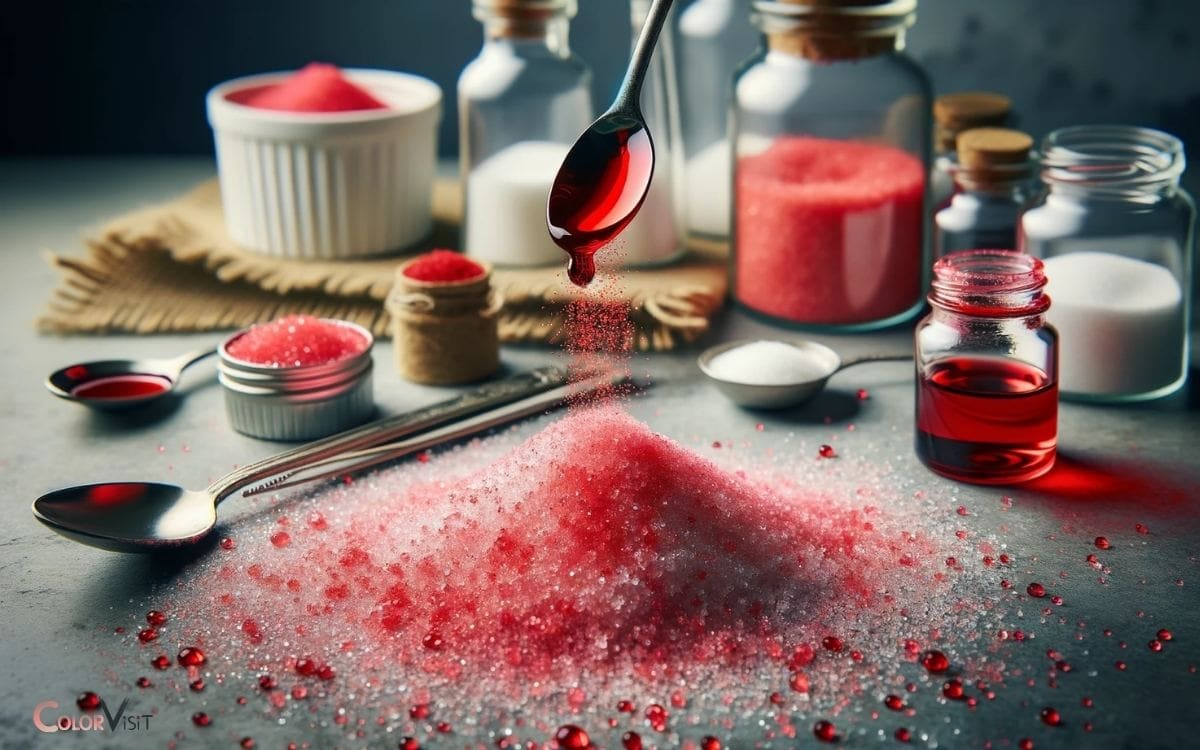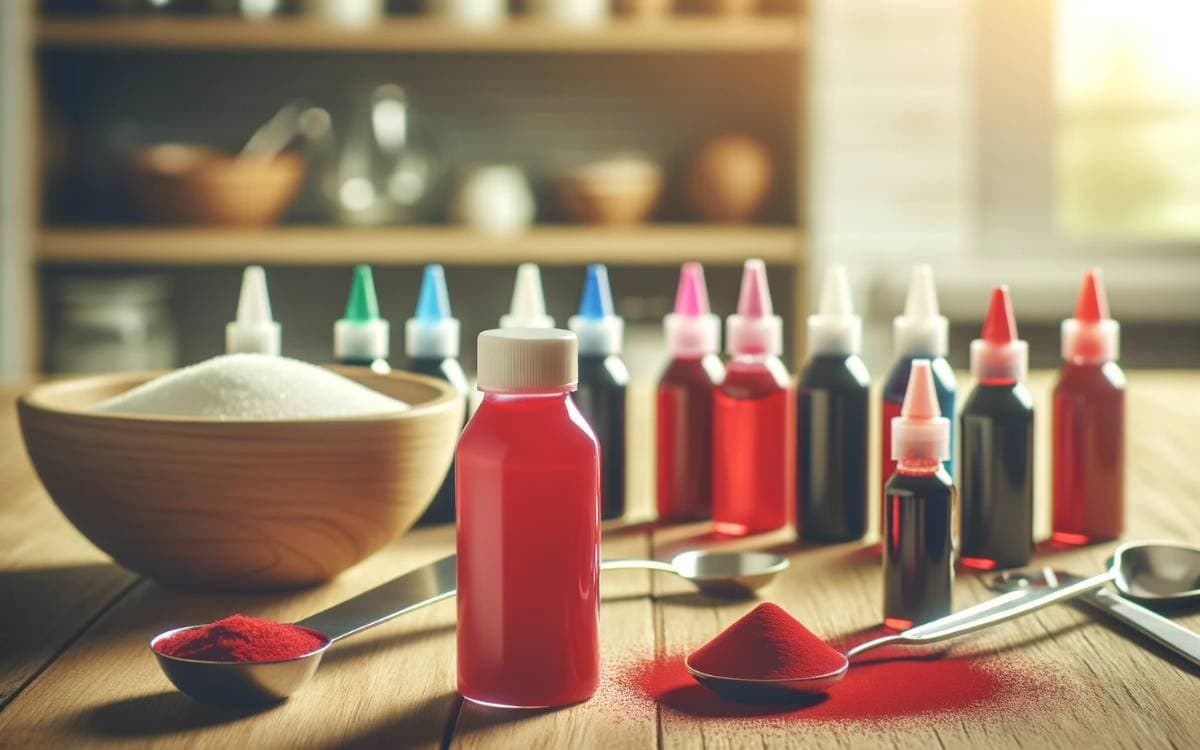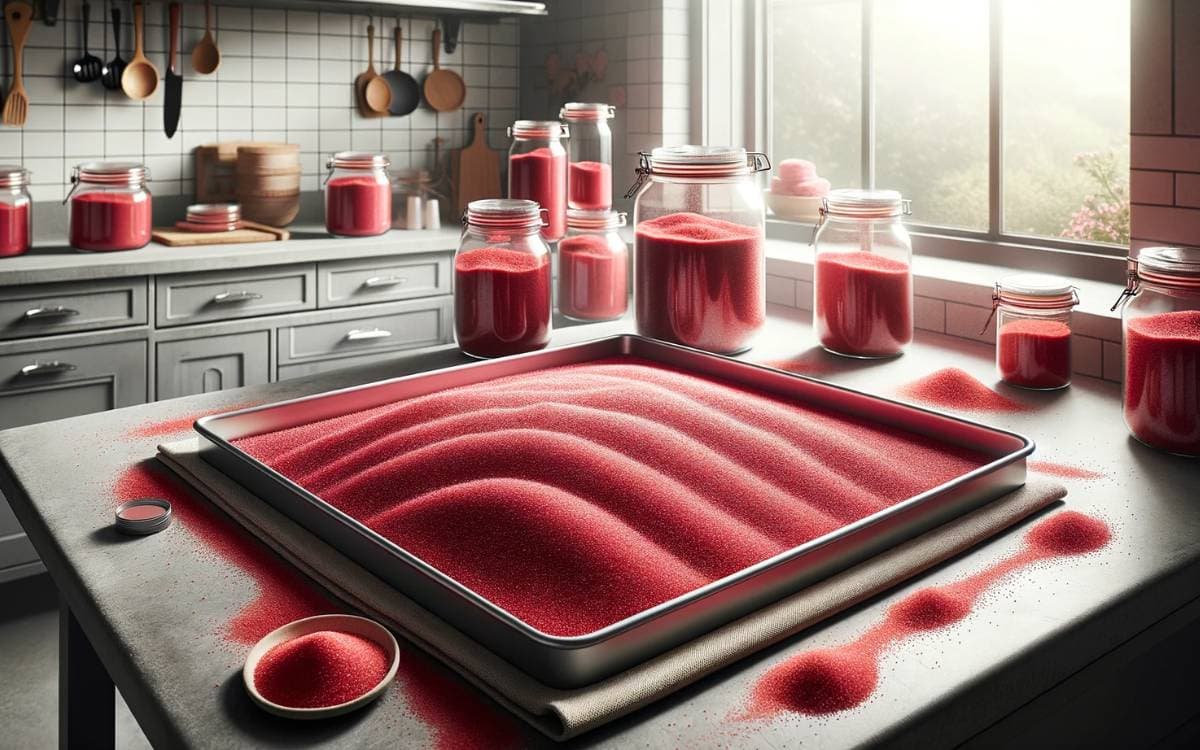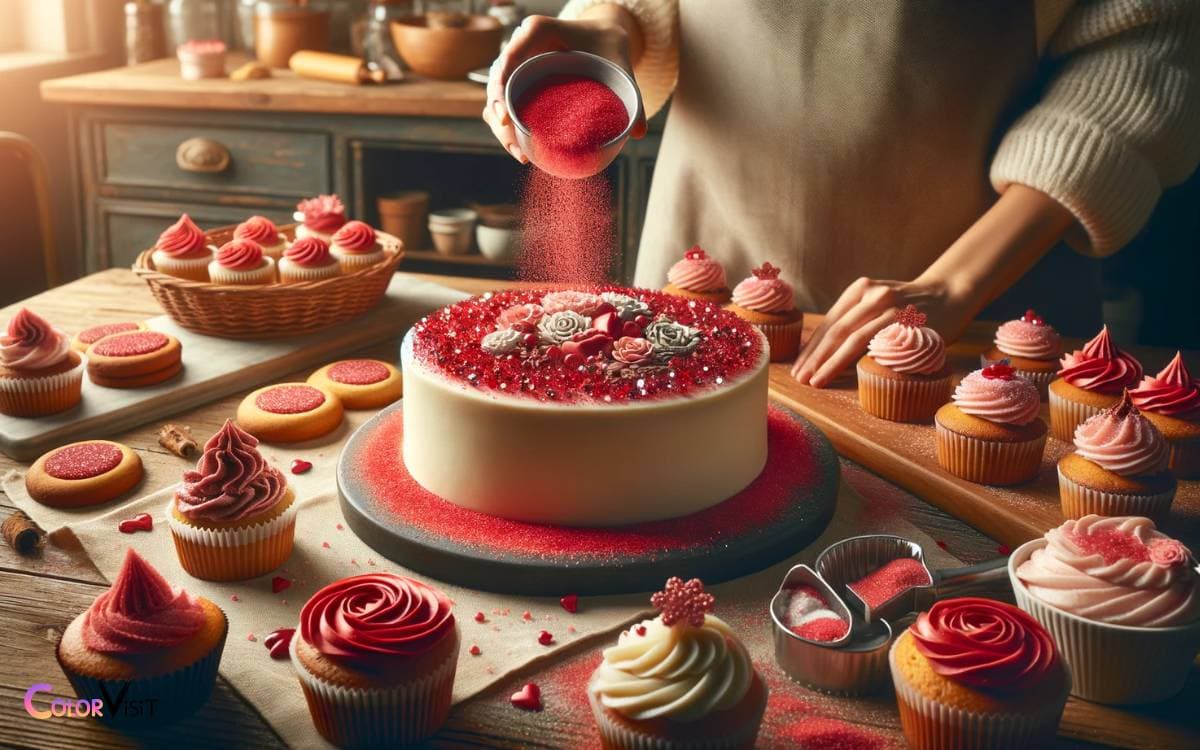How to Make Red Colored Sugar? 4 Steps!
To infuse a burst of red into your baking and garnishing, making your own red-colored sugar is straightforward.
To make red-colored sugar, follow these process:
Adding a custom touch to your baking and beverage garnishes is effortless with homemade red-colored sugar. It’s a creative and cost-effective way to enhance the visual appeal of your treats.
Key Takeaway
Step 1: Choosing the Right Food Coloring
When making red colored sugar, it is essential to choose the right food coloring that will provide a vibrant and consistent hue throughout the sugar.
- Opt for gel or powdered food coloring instead of liquid ones, as they contain less water, which can prevent the sugar from clumping.
- It is crucial to select a food coloring that is labeled as red-red or no-taste red, as these variations are more concentrated and will require less product to achieve the desired color, minimizing the risk of altering the sugar’s texture.
Additionally, consider using natural food colorings derived from sources like beets or pomegranates for a more organic option.
Step 2: Mixing the Sugar and Food Coloring
To create red colored sugar, begin by thoroughly mixing the sugar and chosen food coloring in a large bowl.
- Use a ratio of 1-2 drops of food coloring for every ½ cup of sugar for a vibrant red hue.
- It is essential to evenly distribute the food coloring throughout the sugar to achieve a consistent color.
- A spatula or whisk can be used to combine the sugar and food coloring effectively.
- Ensure that any clumps of food coloring are broken up and fully integrated into the sugar.
- The mixing process may take a few minutes, and it is important to be patient to achieve the desired result.
Once the sugar and food coloring are thoroughly combined, spread the mixture onto a baking sheet to dry completely before use.
Step 3: Drying and Storing the Red Colored Sugar
Drying and storing the red colored sugar involves spreading the mixture onto a baking sheet and allowing it to dry completely before transferring it to an airtight container for long-term storage.
Once the red colored sugar is completely dry, follow these steps for proper storage:
- Ensure the sugar is at room temperature before storing.
- Store the red colored sugar in a cool, dry place away from direct sunlight to prevent color fading.
- Use airtight containers to maintain the sugar’s texture and color.
Properly dried and stored red colored sugar can be used in a variety of recipes to add a pop of color and sweetness.
Step 4: Using Red Colored Sugar in Your Recipes
Red colored sugar can enhance the visual appeal and sweetness of your recipes, adding a vibrant touch to your culinary creations.
- When used in baking, it can impart a striking red hue to cookies, cakes, and other confections, making them visually appealing and irresistible.
- For beverages, such as cocktails or mocktails, a rim of red colored sugar on the glass can elevate the presentation and offer a delightful sweetness with each sip.
- Red colored sugar can be used to decorate fruit salads, candies, and even savory dishes, providing a pop of color and a hint of sweetness.
Its versatility makes it a valuable ingredient for both sweet and savory recipes, allowing for endless creative possibilities in the kitchen.
Tips for Achieving Vibrant Red Results
When using red colored sugar in recipes, it is essential to achieve vibrant results that enhance both the visual appeal and flavor of the dishes.
To achieve the best vibrant red results, consider the following tips:
- Use gel or powdered food coloring instead of liquid coloring for a more concentrated and vibrant hue.
- Add the food coloring gradually and mix thoroughly to control the intensity of the red color.
- Store the colored sugar in an airtight container away from direct sunlight to maintain its vibrant red color for an extended period.
Conclusion
Making red colored sugar involves selecting the right food coloring, mixing it with sugar, and then drying and storing the colored sugar appropriately.
When using red colored sugar in recipes, it is important to ensure vibrant results.
Interestingly, red food coloring is the most commonly used food coloring, accounting for 60% of all food coloring sales globally. This statistic emphasizes the widespread use of red coloring in the food industry.






